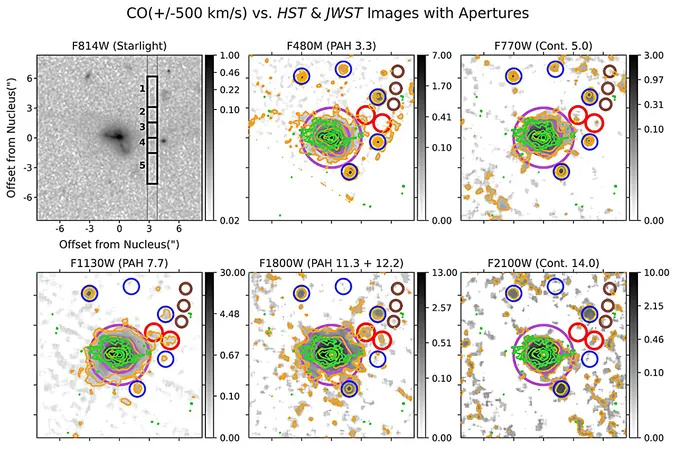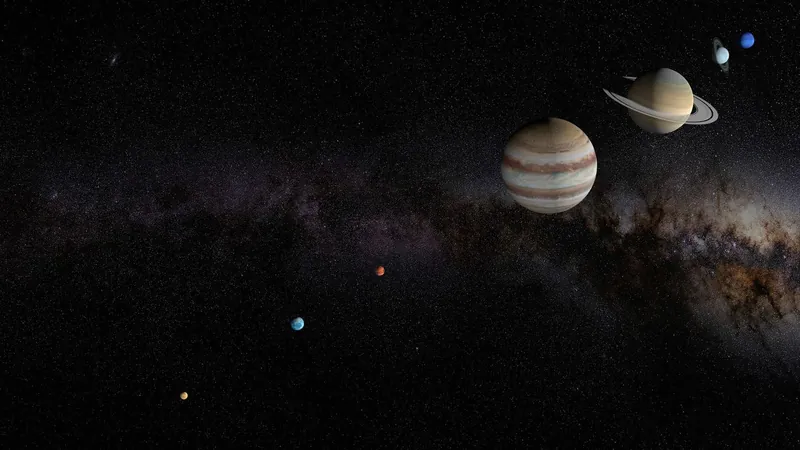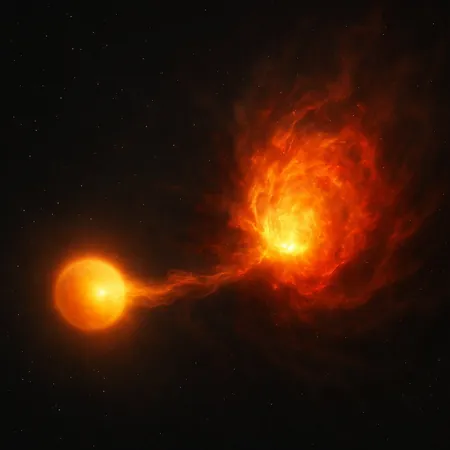
Groundbreaking Discovery: Warm Space Dust Found in Distant Makani Galaxy's Halo!
2025-09-03
Author: Charlotte
Unveiling the Cosmic Secrets of the Makani Galaxy
In a stunning revelation, astronomers have uncovered warm dust particles in the far-off Makani galaxy, a location so remote that its mysteries have eluded scientists for eons. Picture this: a cosmic whirlwind fueled by the radiant light of newly formed stars, propelling dust out into the vastness of space in a spectacular starburst-driven wind.
A Historic First with the James Webb Space Telescope
A team of researchers, spearheaded by Professor Sylvain Veilleux from the University of Maryland, achieved a monumental breakthrough utilizing the James Webb Space Telescope (JWST). For the first time, they directly detected infrared emissions from space dust over such staggering distances. Their findings, published on August 25, 2025, in The Astrophysical Journal, could dramatically reshape our understanding of how gas and dust outflows sculpt the evolution of galaxies.
Veilleux remarked, "These results provide the strongest evidence yet that dust ejected by galactic winds can withstand the tumultuous journey to the circumgalactic medium (CGM). Before this, we lacked direct evidence on such a grand scale—thanks to JWST, we’ve changed that narrative!"
Why Is This Dust Discovery So Crucial?
Makani, which translates to "wind" in Hawaiian, is a fitting name for a galaxy undergoing intense star formation, marked by a powerful galactic wind that monopolizes its gas and dust. While previous studies focused mainly on gas outflows, this groundbreaking research dives deeper to explore the fate of the dust within these streams. Although tiny, these galactic dust particles are vital for the formation of new stars and planets. Understanding how dust and gas cycles in and out of galaxies could provide essential insights into galactic evolution.
The Journey of Dust: A Surprising Resilience
During their exploration, Veilleux and his team discovered that while dust particles did degrade during their tumultuous journey through cosmic winds, they miraculously managed to survive. This revelation raises tantalizing questions: How did these dust particles withstand extreme conditions, including being enveloped by gas heated to over 10,000 Kelvin (over 17,000°F)? Veilleux speculates that cooler gas clumps may have shielded the dust, acting like a protective cocoon.
What's Next for Researchers?
Not resting on their laurels, Veilleux and his colleagues are planning ambitious follow-up studies with JWST to analyze the “fingerprint” of this dust. This deeper examination will reveal the unique characteristics of the dust particles, including their sizes. Moreover, Veilleux has set his sights even higher—exploring whether dust can be detected in the intergalactic medium, a vast expanse between galaxies that could stretch over a million light-years.
A Window into the Cosmic Future
Veilleux believes that these groundbreaking studies do more than expose our past; they illuminate the galaxies’ trajectories into the future. "Galaxies are dynamic entities," he notes. "They continue to evolve, with the cycling of gas being critical for understanding their future developments." Look out, universe—this dust discovery might just be the tip of the cosmic iceberg!









 Brasil (PT)
Brasil (PT)
 Canada (EN)
Canada (EN)
 Chile (ES)
Chile (ES)
 Česko (CS)
Česko (CS)
 대한민국 (KO)
대한민국 (KO)
 España (ES)
España (ES)
 France (FR)
France (FR)
 Hong Kong (EN)
Hong Kong (EN)
 Italia (IT)
Italia (IT)
 日本 (JA)
日本 (JA)
 Magyarország (HU)
Magyarország (HU)
 Norge (NO)
Norge (NO)
 Polska (PL)
Polska (PL)
 Schweiz (DE)
Schweiz (DE)
 Singapore (EN)
Singapore (EN)
 Sverige (SV)
Sverige (SV)
 Suomi (FI)
Suomi (FI)
 Türkiye (TR)
Türkiye (TR)
 الإمارات العربية المتحدة (AR)
الإمارات العربية المتحدة (AR)